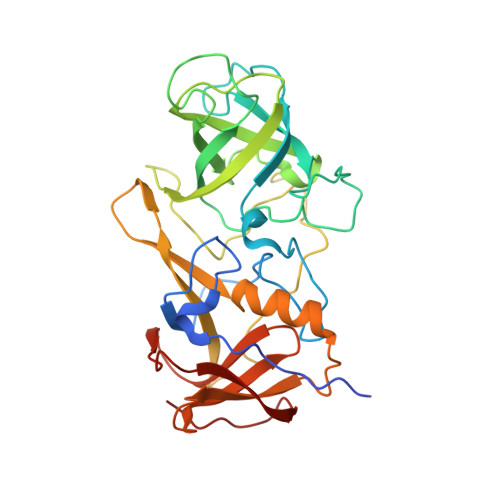A Unique Human Norovirus Lineage with a Distinct HBGA Binding Interface.
Liu, W., Chen, Y., Jiang, X., Xia, M., Yang, Y., Tan, M., Li, X., Rao, Z.(2015) PLoS Pathog 11: e1005025-e1005025
- PubMed: 26147716
- DOI: https://doi.org/10.1371/journal.ppat.1005025
- Primary Citation of Related Structures:
4RLZ, 4RM0 - PubMed Abstract:
Norovirus (NoV) causes epidemic acute gastroenteritis in humans, whereby histo-blood group antigens (HBGAs) play an important role in host susceptibility. Each of the two major genogroups (GI and GII) of human NoVs recognizes a unique set of HBGAs through a distinct binding interface that is conserved within a genogroup, indicating a distinct evolutionary path for each genogroup. Here, we characterize a Lewis a (Lea) antigen binding strain (OIF virus) in the GII.21 genotype that does not share the conserved GII binding interface, revealing a new evolution lineage with a distinct HBGA binding interface. Sequence alignment showed that the major residues contributing to the new HBGA binding interface are conserved among most members of the GII.21, as well as a closely related GII.13 genotype. In addition, we found that glycerol inhibits OIF binding to HBGAs, potentially allowing production of cheap antivirals against human NoVs. Taken together, our results reveal a new evolutionary lineage of NoVs selected by HBGAs, a finding that is important for understanding the diversity and widespread nature of NoVs.
- School of Life Sciences, University of Science and Technology of China, Hefei, Anhui, China.
Organizational Affiliation:




















